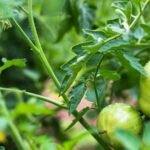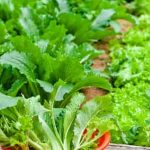When it comes to maintaining a flourishing vegetable garden, managing weed growth is a crucial aspect. Gardeners often seek effective weed control methods that can ensure they have robust and healthy crops. One popular product on the market is Preen, a herbicide known for its effectiveness in preventing weed growth. However, there has been significant debate surrounding the use of Preen in vegetable gardens due to concerns about its safety.
In this article, we will delve into the controversial topic of using Preen in vegetable gardens and explore the potential risks associated with its use. We aim to provide readers with an informed understanding of whether it is safe or not to use this herbicide in their beloved vegetable patches.
Before delving into the discussion on the safety of Preen, it is crucial to understand what exactly this product is and how it functions as part of garden maintenance. In the next section, we will provide an in-depth explanation of Preen’s purpose and functionality so readers can grasp its significance in keeping gardens weed-free.
As we embark on this exploration, we will address common misconceptions and debunk myths surrounding Preen’s safety. By examining its active ingredients and potential impacts on vegetable plants, we hope to shed light on whether or not these concerns are substantiated. Furthermore, we will explore environmental considerations such as effects on soil health, water quality, and beneficial insects in vegetable gardens by using Preen.
Human health concerns regarding exposure and consumption of vegetables grown in treated gardens will also be investigated. With these various perspectives, readers can weigh both sides before making any decisions.
Join us as we navigate through this complicated issue, analyzing regulatory standards and certifications to determine if government agencies consider Preen safe for use in vegetable gardens. Additionally, alternative organic and natural weed control methods will be explored for those who prefer a chemical-free approach.
In the end, we aim to provide readers with expert recommendations and best practices gathered from horticulture professionals and experienced gardeners. With their insights, readers can make well-informed decisions when it comes to the safe application of Preen in vegetable gardens.
Intrigue about whether Preen is safe or not in vegetable gardens ends here. This article will equip you with the knowledge needed to make informed decisions, ensuring your garden flourishes while prioritizing safety.
What is Preen
Preen is a widely used herbicide that is designed to prevent the growth of weeds in gardens and landscaped areas. Its main purpose is to create a weed-free environment, allowing plants to thrive without competition for sunlight, water, and nutrients. Preen works by inhibiting cell division in germinating seeds, effectively preventing them from developing into viable plants.
The functionality of Preen lies in its active ingredients, which vary depending on the product. Some common active ingredients found in Preen include trifluralin, dithiopyr, pendimethalin, and oryzalin. These chemicals work by disrupting the growth processes of weeds, preventing them from establishing themselves and competing with desirable plants.
One key aspect of Preen’s functionality is its pre-emergent nature. This means that it needs to be applied before weed seeds germinate for it to be effective. Once Preen is applied to the soil surface, it forms a barrier that prevents weed seeds from successfully germinating and establishing roots. It does not kill existing weeds or their roots but rather stops new weed seeds from growing.
Using Preen also offers another advantage in garden maintenance – its long-lasting effects. Depending on the formulation and environmental conditions, a single application of Preen can provide up to several months of weed control. This makes it an efficient tool for gardeners who want a low-maintenance approach to weed prevention.
The Controversy
One of the main points of contention surrounding the use of Preen in vegetable gardens is its potential impact on the health and safety of plants, animals, and humans. In this section, we will debunk some common myths and address concerns related to Preen’s safety in vegetable gardens.
Myth: Preen contains harmful chemicals that can leach into vegetables
There is a widespread misconception that the active ingredients in Preen can leach into vegetables, making them unsafe for human consumption. However, it is important to note that Preen is specifically formulated to target weeds and does not directly harm vegetable plants.
The active ingredients in Preen work by inhibiting weed seed germination and growth, without affecting established plants or their produce. Even if small amounts of the product were to come into contact with vegetables, studies have shown that the levels are well below the thresholds considered harmful for human health.
Concern: Preen may disrupt soil health
Another concern regarding the use of Preen in vegetable gardens is its potential impact on soil health. Some gardeners worry that continuous application of Preen could degrade soil quality over time. However, research has indicated that when used as directed, Preen does not have a significant negative effect on soil health or fertility. It breaks down quickly in the soil and does not persist over long periods.
Concern: Preen may harm beneficial insects
Some critics argue that the widespread use of herbicides like Preen could harm beneficial insects such as bees and butterflies that play a crucial role in pollination. While it is true that indiscriminate use of herbicides can have unintended consequences on beneficial insect populations, studies have shown that when used correctly and according to label instructions, the risk to these insects is minimal.
In fact, using Preen as a weed control method can actually benefit pollinators by reducing competition from invasive weeds and providing them with a healthier environment.
By debunking these myths and addressing concerns about Preen’s safety in vegetable gardens, it becomes clear that when used responsibly and according to label instructions, Preen is a safe and effective tool for weed control. However, it is important for gardeners to be aware of potential risks and take necessary precautions to ensure the health and productivity of their vegetable gardens.
In the following sections, we will further explore the specific aspects related to Preen’s safety, such as its chemical components, environmental considerations, human health concerns, regulatory standards, and certifications.
Assessing the Active Ingredients
Preen is a popular weed control product used by gardeners to eliminate unwanted plants and maintain the cleanliness of their vegetable gardens. However, there are concerns about the safety of using Preen in vegetable gardens due to its chemical composition. In this section, we will take an in-depth look at the active ingredients in Preen and their potential impacts on vegetable plants.
The active ingredients in Preen can vary depending on the specific product, but one common ingredient is trifluralin. Trifluralin is a pre-emergent herbicide that works by inhibiting cell division in germinating seeds, preventing them from growing into mature plants. While it can effectively control weeds, there are concerns about its impact on vegetable plants.
One potential concern is that trifluralin can affect the germination and growth of vegetable seeds if not used correctly. It is important to follow the recommended application rates and timing specified on the product label to minimize any negative effects on vegetable plants. Additionally, some vegetables may be more sensitive to trifluralin than others, so it is advisable to consult the seed supplier or horticulture professional for specific recommendations.
Another active ingredient commonly found in Preen is dithiopyr. Dithiopyr is also a pre-emergent herbicide that inhibits seedling growth by disrupting cell division and photosynthesis processes. Similarly to trifluralin, proper application of Preen with dithiopyr is crucial to avoid detrimental effects on vegetable plants.
- Assess the different active ingredients in Preen that may be present depending on the product.
- Explain how trifluralin works as a pre-emergent herbicide and its potential impact on vegetable seeds and plants.
- Discuss the role of dithiopyr as an active ingredient in Preen and its effects on seedling growth and photosynthesis.
Environmental Considerations
The Impact on Soil Health
One of the key concerns regarding the use of Preen in vegetable gardens is its potential impact on soil health. Preen contains a range of chemical ingredients that are designed to inhibit weed growth, but these chemicals may also have unintended consequences for the overall health and fertility of the soil.
Some studies have suggested that certain active ingredients in Preen can persist in the soil for extended periods of time and may leach into groundwater. This can potentially disrupt the balance of beneficial microorganisms in the soil and affect nutrient availability for vegetable plants. Additionally, repeated use of Preen over time can lead to a buildup of residues in the soil, which may further impact its long-term health.
It is important for gardeners to consider these potential risks when deciding whether to use Preen in their vegetable gardens. If maintaining healthy soil is a priority, alternative organic methods of weed control may be worth exploring.
The Impact on Water Quality
Water quality is another environmental consideration when using Preen in vegetable gardens. As mentioned earlier, some active ingredients in Preen can leach into groundwater and potentially contaminate water sources. This can have detrimental effects on aquatic ecosystems and other forms of wildlife that rely on clean water.
Furthermore, if contaminated water is used for irrigating vegetable plants grown in treated gardens, there is a possibility of chemicals accumulating within the plants themselves. This raises concerns about potential human consumption of vegetables with traces of Preen residues.
It’s important for gardeners to be mindful of how their gardening practices may affect water quality and take precautions to minimize any negative impacts.
The Impact on Beneficial Insects
In addition to soil health and water quality, another crucial consideration is the impact of Preen on beneficial insects. Many insects play an essential role in pollination and natural pest control within vegetable gardens.
While Preen targets weed seeds, there is a possibility that it may also affect non-targeted species of insects. This can disrupt the delicate balance of ecosystem dynamics and potentially lead to a decline in populations of pollinators and natural predators of garden pests.
Gardeners should be cautious about the potential unintended consequences on beneficial insect populations and consider alternative weed control methods that can better protect these important contributors to a thriving garden ecosystem.
Human Health Concerns
One significant concern for gardeners considering the use of Preen in their vegetable gardens is the potential impact on human health. As Preen is applied to control weeds, there may be opportunities for exposure to its chemical ingredients. Additionally, there is a concern regarding the consumption of vegetables that have been grown in soil treated with Preen. This section aims to investigate these concerns and shed light on the potential risks associated with using Preen in vegetable gardens.
Exposure to Preen can occur through inhalation or contact with the skin during application. The active ingredients in Preen are typically absorbed by plants’ roots and translocated throughout their tissues, including the edible parts. Therefore, it is crucial to consider the potential effects of these chemicals on human health.
Studies examining the impact of Preen on human health are limited but provide some insights into its safety. It is important to note that while some research suggests minimal risks associated with exposure to Preen, further investigation is needed to fully understand its long-term effects.
When it comes to consuming vegetables grown in soil treated with Preen, studies indicate that there might be trace amounts of residual chemical ingredients present. However, these traces are generally well below toxic levels and considered safe for consumption.
To minimize any potential risks related to human health, it is recommended to follow best practices when applying Preen in vegetable gardens. Wearing protective clothing, such as gloves and a mask, can help reduce exposure during application. Additionally, thoroughly washing harvested vegetables before consumption can remove any residual traces on their surfaces.
Regulatory Standards and Certifications
Government agencies play a crucial role in assessing and determining the safety of products like Preen for use in vegetable gardens. These agencies aim to protect public health and ensure environmental sustainability by establishing regulatory standards and certifications. In the case of Preen, there are specific regulations and certifications that gardeners should be aware of before using it in their vegetable gardens.
One important agency involved in regulating pesticide products is the Environmental Protection Agency (EPA) in the United States. The EPA sets guidelines for the approval and registration of herbicides like Preen. They evaluate various aspects such as toxicity, environmental impact, effectiveness, and labeling requirements. Before a product can be approved for sale, it must meet these stringent criteria set by the EPA.
Additionally, government agencies also collaborate with independent organizations to establish certifications and labels that provide further reassurance regarding a product’s safety. One such organization is the Organic Materials Review Institute (OMRI). OMRI determines whether agricultural inputs, including weed control products like Preen, comply with organic standards. If a product receives OMRI certification, it means that it has been verified as suitable for organic gardening practices.
It is essential for gardeners to look for regulatory compliance and certifications when considering using Preen or any other pesticide product in their vegetable gardens. These indicators serve as evidence that government agencies have thoroughly evaluated the product’s safety and deemed it suitable for use while complying with specific regulations or organic standards.
By checking for these certifications, gardeners can make informed decisions about using Preen or exploring alternative options that align with their preferences and goals for safe gardening practices.
| Regulatory Agency | Role/Responsibility |
|---|---|
| Environmental Protection Agency (EPA) | Evaluates and approves herbicides like Preen based on criteria such as toxicity, environmental impact, effectiveness, and labeling requirements. |
| Organic Materials Review Institute (OMRI) | Determines whether agricultural inputs, including weed control products like Preen, comply with organic standards through verification and certification. |
Alternatives to Preen
There are several alternatives to using Preen that provide effective weed control in vegetable gardens without potentially harmful chemicals. These alternatives are organic and natural methods that are safe for both the environment and human health. By exploring these options, gardeners can maintain a weed-free garden while promoting the health and productivity of their vegetable plants.
One popular alternative to Preen is mulching. Mulch acts as a barrier, preventing weeds from growing by blocking sunlight and hindering their germination. Organic materials such as straw, wood chips, or shredded leaves can be used as mulch in vegetable gardens. Not only does mulching suppress weeds, but it also helps retain moisture in the soil and regulate soil temperature.
Another natural method of weed control is handweeding. While it may require more effort and time, handweeding allows for precise removal of weeds without harming vegetable plants. It is important to remove the entire weed, including its roots, to prevent regrowth. Handweeding can be done using a trowel or hoe, depending on the size of the garden and the type of weeds present.
| Alternative Methods | Description |
|---|---|
| Mulching | Mulch acts as a barrier, preventing weeds from growing by blocking sunlight and hindering their germination. |
| Handweeding | Precise removal of weeds without harming vegetable plants by manually uprooting them. |
Additionally, crop rotation is another effective technique for controlling weeds in vegetable gardens. By planting different crops each season in designated areas of the garden, certain weed species can be suppressed or controlled naturally. This method disrupts the life cycle of common weed species that may have become established in the garden.
Some gardeners may also opt for using vinegar or salt-based weed killers as natural alternatives to Preen. These solutions are typically non-toxic and can be applied directly to the weeds, causing them to wither and die. However, it is important to exercise caution when using these products as they could also harm desirable plants if not applied carefully.
By exploring and implementing these organic and natural weed control methods, gardeners can maintain a healthy and productive vegetable garden while minimizing potential risks to the environment and human health. It is recommended to choose the method that best suits the specific needs of the garden and regularly monitor for any signs of weed growth for timely control.
Expert Recommendations and Best Practices
When it comes to using Preen in vegetable gardens, it is essential to gather insights and recommendations from horticulture professionals and experienced gardeners. These experts have extensive knowledge and experience in garden maintenance, including the safe application of weed control products like Preen. By following their recommendations and best practices, gardeners can ensure the safe and effective use of Preen in their vegetable gardens.
One common recommendation from experts is to carefully read and follow the instructions provided by the manufacturer on the label of Preen. The label provides crucial information on how to apply the product properly, including dosage, timing, and any precautions or safety measures that need to be taken. Following these instructions accurately will help minimize any potential risks associated with using Preen in vegetable gardens.
Experts also emphasize the importance of applying Preen at the recommended time in vegetable gardens. Timing is key when it comes to preventing weed growth without harming vegetable plants. Horticulture professionals suggest applying Preen before planting seeds or transplants while avoiding direct contact with young seedlings or delicate plants. Additionally, experts recommend reapplying Preen according to the manufacturer’s guidelines throughout the growing season to maintain weed control effectively.
In addition to following proper application techniques, experts also highlight the significance of monitoring your vegetable garden after using Preen. Regularly inspecting your plants for any signs of stress or damage is crucial. If you notice any adverse effects on your vegetables after applying Preen, it may be necessary to discontinue its use or seek advice from a horticulture professional who can provide tailored guidance based on your specific circumstances.
By gathering insights from horticulture professionals and experienced gardeners, vegetable gardeners can learn about expert recommendations and best practices for safely applying Preen. Following these guidelines can help maximize the benefits of using this weed control product while minimizing any potential risks to vegetable plants and the environment. However, it is important to remember that individual gardening situations may vary, and consulting with a local horticulture expert can provide personalized advice for your specific garden needs.
Conclusion
In conclusion, the use of Preen in vegetable gardens presents both benefits and potential risks. It is crucial for gardeners to weigh these pros and cons before making informed decisions for safe and productive gardening.
On one hand, Preen serves a valuable purpose in garden maintenance by preventing weed growth and reducing the need for manual labor. This can save gardeners time and effort, allowing them to focus on other aspects of vegetable cultivation. Additionally, Preen’s effectiveness has been praised by many horticulture professionals and experienced gardeners who have successfully used it in their own vegetable gardens.
However, it is important to acknowledge the potential risks associated with Preen. The active ingredients in Preen may have negative impacts on soil health, water quality, and beneficial insects that play a crucial role in maintaining a balanced ecosystem in vegetable gardens. Furthermore, concerns about human health arise from exposure to Preen through skin contact or consumption of vegetables grown in treated gardens.
To ensure safe usage of Preen, it is recommended that gardeners thoroughly understand the product label instructions and follow them carefully. It is also advisable to explore alternative organic and natural weed control methods that do not pose similar risks to soil health, water quality, beneficial insects, or human health.
Ultimately, the decision on whether to use Preen in vegetable gardens should be made after considering all available information on its potential pros and cons. By making informed choices based on individual circumstances and priorities, gardeners can strike a balance between effective weed control and maintaining a safe and productive environment for their vegetables.
Frequently Asked Questions
Is Preen safe for tomato plants?
Preen is generally safe to use on tomato plants when applied correctly and according to the product instructions. It is a pre-emergent herbicide that forms a barrier on the soil surface, preventing weed seeds from germinating and competing with the desired plants for nutrients, water, and sunlight.
However, it is important to note that Preen should not be sprayed directly onto tomato foliage, as it may cause damage or inhibit growth. To ensure safety, it is recommended to apply Preen before planting tomatoes or after seedlings have established themselves in the garden.
What are the negative effects of Preen?
While Preen can be effective in preventing weeds and promoting plant growth in vegetable gardens, there are some potential negative effects associated with its use. One drawback of using any pre-emergent herbicide like Preen is that it can also inhibit the germination or growth of desired seeds, including those of vegetables or flowers you want to plant.
Additionally, some gardeners have reported reduced effectiveness over time due to weed resistance. It is always advisable to carefully read and follow the product label instructions and avoid applying excessive amounts of Preen as misuse can harm not only weeds but also other plants.
How do you apply Preen to a vegetable garden?
When applying Preen to a vegetable garden, it is vital to take certain steps to ensure proper usage and minimize potential harm. Start by preparing the garden bed thoroughly by removing any existing weeds manually or using appropriate tools without disturbing the soil too extensively. Once the area is prepared, sprinkle a thin layer of Preen granules evenly across the soil surface around established vegetable plants or before planting new ones. Take care not to directly contact plant foliage as this might cause damage or stunted growth.
Afterward, gently rake or water the area if specified on the product label instructions as this will help activate or incorporate the Preen into the top layer of soil where weed seeds reside. Regularly monitor your garden for new emerging weeds and hand-pull them as necessary, as Preen can only prevent seeds from germinating and will not eliminate pre-existing weeds. Remember to always read and follow the instructions provided by the manufacturer for the specific type of Preen you are using, as different formulations may have slightly different application methods.

If you’re looking to get into vegetable gardening, or are just looking for some tips on how to make your current garden better, then you’ve come to the right place! My name is Ethel and I have been gardening for years. In this blog, I’m going to share with you some of my best tips on how to create a successful vegetable garden.





